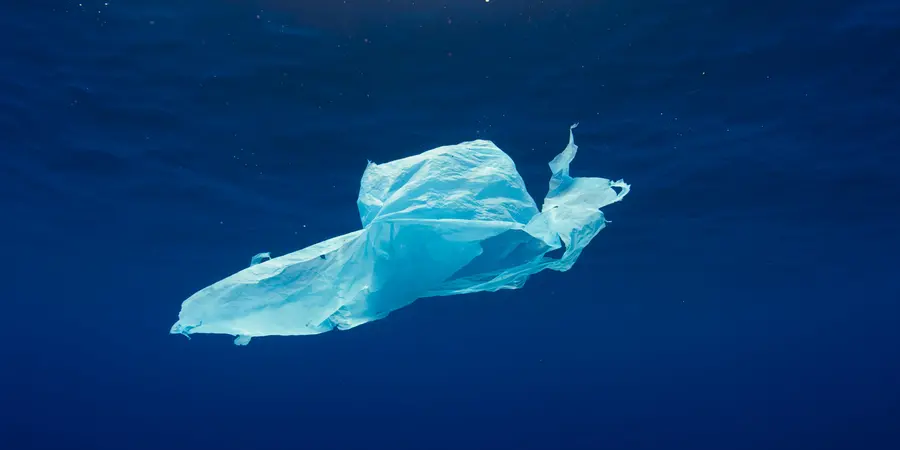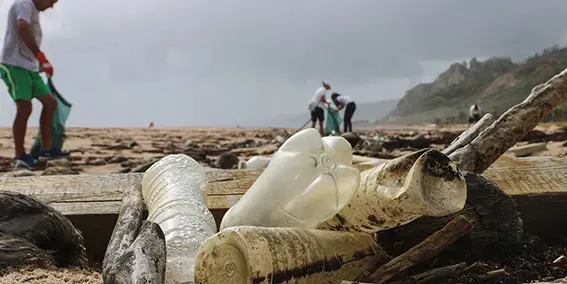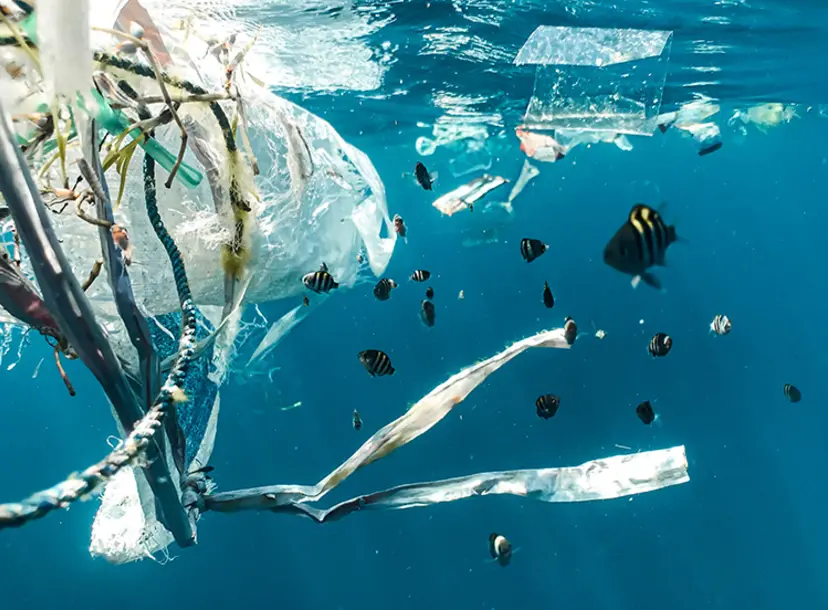Plastic is fantastic. Right? It’s an awesome material for so many things. It keeps medical items sterile. It brings access to drinking water. It can even make plane and car parts lighter to reduce their carbon footprint. So why is plastic so problematic?
Not-so-single use
Let me tell you the life story of a plastic bag. It starts off as fossil fuel, which gets refined into the building blocks of plastic. Polyethylene is the polymer that makes plastic bags. Thanks to the chemicals added to it, it has the properties of being see-through and flexible. This makes it very useful to transport your shopping home from the supermarket. It then gets put in the bin and will head off to a landfill. This is the main problem.
A plastic bag has a useful life span of about one hour, but it will take up to 1,000 years to degrade in a landfill. Even then, it doesn't disappear entirely. Instead, it turns into smaller and smaller pieces of plastic called microplastics. This is a term that describes pieces of plastic under 5mm. These pieces of plastic can even release their chemicals back out into the environment.

Plastic in the marine environment
Under 10% of the plastic produced worldwide gets recycled. Instead, it generally ends up in landfills and make its way into the ocean. It’s been estimated that by 2050 there could be more plastic than fish in the sea. Scientists have found plastic everywhere, from sediments to deep sea floors and even on remote islands. It drifts through the ocean with the currents and the waves, which can help it break down into microplastics even faster.
Microplastics affect marine life the most. Marine species eat the particles, which can cause injuries to their digestive systems. It might even make them feel full, so they don’t eat anymore, and starve. There is also the threat of the chemicals added to plastic to give it all those useful properties. They may cause development issues and accumulate up the food chain. The risk of these chemicals is much harder to visualise and understand.
On the other side of the size scale, plastic in the ocean can also come in the form of drifting fishing nets. Made out materials such as nylon, they accumulate other pieces of plastic. Marine species can entangle in them, causing injury and in the worst case, death.
How can we solve this seemingly unsolvable issues?
Researchers, including myself, are trying to understand the risks to marine species more deeply. For example, we can look at the overlap between the habitat range of a species and a map of plastic pollution. This allows us to determine which areas are the most at risk and inform the management of those areas. We also sample the water and the sediments to assess where plastic accumulates the most.
Finally, looking at specific items can also provide part of the answer. Plastic bottles are a fountain of information. They have brands, countries of origin, different drink types, and even manufacturing dates. This data helps us understand where the bottles have come from and how long they were at sea. At a global level, this information will form part of the long-term solution to reduce plastic pollution in the ocean.

What can you do?
What can you do at your own local scale to be part of the solution? It’s very easy to feel discouraged about what one person can do to change such an overwhelming issue. I’ve been guilty of feeling like that myself. Yet it's important to remember that your change in behaviour will influence your friends and family. The friends and family will then also influence their own circle. The effect snowballs and before you know it, lots of people are doing something rather than nothing.
This something could be reducing your own consumption of single use plastic. Obvious examples include plastic bottles, bags, cups, and straws. Less obvious items, such as wet wipes, and even synthetic clothing, are just as easy to replace. Additionally, you could write to your local council to see what initiatives they are running to target plastic pollution. Some councils even have youth councils where you can make your voice heard. Finally, many charities focus their missions and actions around plastic pollution. You could volunteer in a beach cleans or at an outreach event. Thames21 is a London based charity that collects plastic bottles around the Thames. They use the information to understand the behaviours driving plastic consumption in a large city. They can also visualise how much of it makes its way to the ocean. Plastic Free Schools is a UK charity that focusses on reducing plastic use in schools. There are many more charities around the UK and the rest of the world.
To conclude, plastic is a great material for certain circumstances. However, our over-reliance on single use plastic makes it a huge issue for the environment, particularly the ocean. Researchers are trying to understand the risks of plastic pollution to many species, and how to reduce the pollution at the source. On a local scale, it’s important to know that every little action matters and helps to contribute to the global solution.
About the author
Jess is a third year PhD student on the London NERC DTP, supervised at Royal Holloway University of London and the Institute of Zoology at the Zoological Society of London. Her PhD explores the origins of plastic pollution in the ocean and the impacts it can have on manta rays. She did a three months science engagement internship at the Royal Institution, helping with workshops in the L'Oreal Young Scientist Centre.
